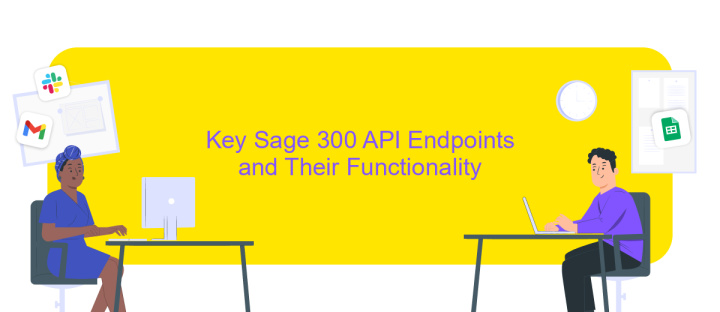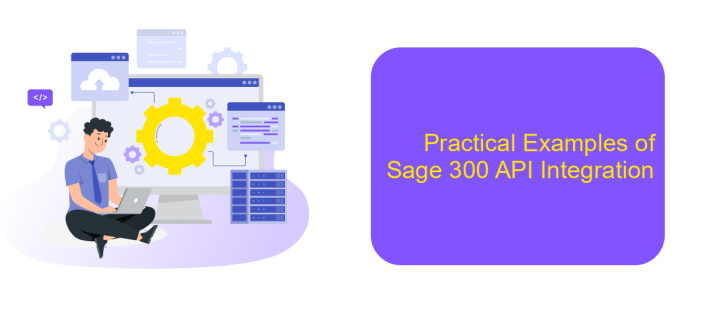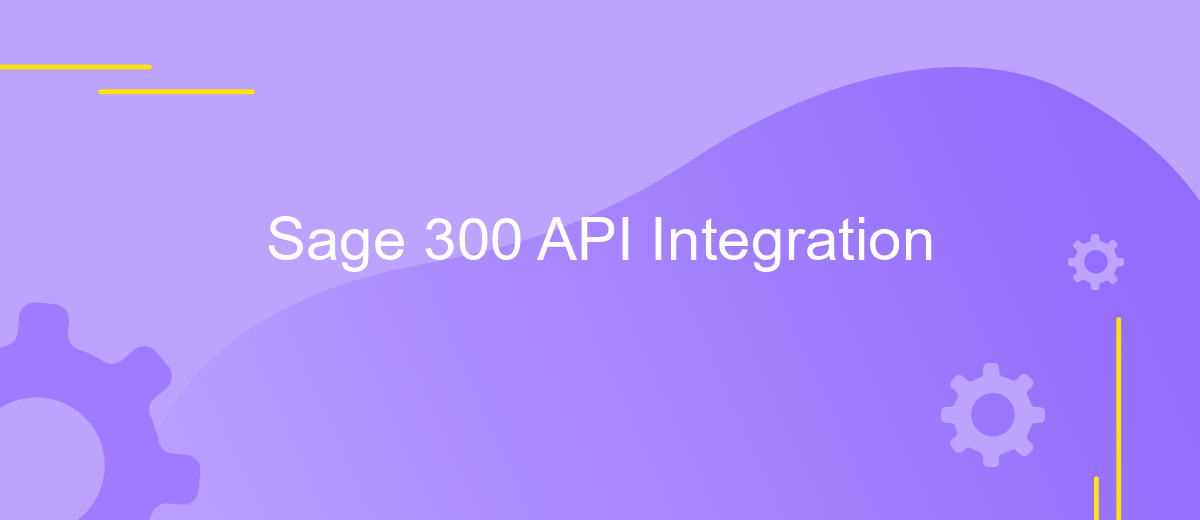Sage 300 API Integration
Integrating Sage 300 with other business applications through its API can significantly enhance operational efficiency and data management. By leveraging Sage 300's robust API capabilities, businesses can automate workflows, reduce manual data entry, and ensure real-time data synchronization across platforms. This article explores the key benefits and steps involved in integrating Sage 300 with external systems, providing insights into how this integration can streamline business processes.
Understanding the Sage 300 API Architecture
The Sage 300 API architecture is a robust framework designed to facilitate seamless integration with various business applications. This architecture enables developers to access and manipulate data within the Sage 300 ERP system, promoting enhanced functionality and streamlined operations. By leveraging RESTful API principles, Sage 300 ensures that communication between applications is efficient and secure, allowing businesses to customize their workflows according to specific needs.
- Modular Design: The API is organized into modules, each corresponding to different functional areas of Sage 300, such as accounting, inventory, and sales.
- Authentication: It employs OAuth 2.0 protocol for secure authentication, ensuring that only authorized users can access sensitive data.
- Data Format: The API supports JSON data format, making it easy to integrate with modern web applications.
- Versioning: Sage 300 API supports versioning, allowing developers to adopt new features without disrupting existing integrations.
Understanding the architecture of the Sage 300 API is crucial for developers aiming to enhance business processes through integration. By utilizing its modular design and secure communication protocols, businesses can achieve greater efficiency and adaptability. This architecture not only supports current technological standards but also provides a scalable solution for future growth and innovation.
Authentication and Authorization for Sage 300 API Access

To access the Sage 300 API, proper authentication and authorization mechanisms must be in place to ensure secure data exchange. Authentication typically involves verifying the identity of the user or system attempting to access the API. Sage 300 employs OAuth 2.0, a robust protocol that provides secure access by requiring a valid access token. This token is obtained through a series of steps that authenticate the user, ensuring that only authorized individuals or systems can interact with the API.
Authorization, on the other hand, determines what actions the authenticated user or system is permitted to perform. Sage 300's API uses role-based access control, allowing administrators to define specific permissions for different users or systems. For businesses looking to streamline their integration process, services like ApiX-Drive can be invaluable. ApiX-Drive offers tools that simplify the connection between Sage 300 and other applications, ensuring that authentication and authorization are handled efficiently and securely. By leveraging such services, businesses can focus more on their core operations while maintaining robust security standards.
Key Sage 300 API Endpoints and Their Functionality

Sage 300 provides a comprehensive suite of API endpoints that facilitate seamless integration with various business processes. These endpoints enable developers to access and manipulate data across different modules, enhancing the overall functionality of the system. Understanding these key endpoints is crucial for optimizing the integration process and ensuring efficient data management.
- Accounts Receivable API: This endpoint allows for the management of customer invoices, receipts, and adjustments, streamlining the accounts receivable process.
- Accounts Payable API: Facilitates the handling of vendor invoices, payments, and adjustments, ensuring accurate and timely accounts payable operations.
- General Ledger API: Provides access to financial data, allowing for the creation, updating, and retrieval of journal entries and account balances.
- Inventory Control API: Manages inventory data, including item details, stock levels, and transaction history, optimizing inventory management.
- Order Entry API: Enables the creation and management of sales orders, quotes, and shipments, enhancing order processing efficiency.
By leveraging these Sage 300 API endpoints, businesses can automate routine tasks, reduce manual errors, and improve overall operational efficiency. Each endpoint serves a specific function, allowing for targeted integration that aligns with business objectives. Proper utilization of these APIs can significantly enhance data accuracy and streamline workflow processes.
Practical Examples of Sage 300 API Integration

Integrating Sage 300 with modern applications can significantly enhance business operations. One common use case is connecting Sage 300 with an e-commerce platform to streamline order processing. By leveraging the API, businesses can automate the transfer of sales orders, inventory levels, and customer data between systems, reducing manual entry and minimizing errors.
Another practical example involves integrating Sage 300 with a CRM system. This integration allows sales and customer service teams to access real-time financial data, such as outstanding invoices and payment history, directly within the CRM. This seamless flow of information can improve customer interactions and decision-making processes.
- Automating purchase order creation from sales data.
- Synchronizing financial reports with business intelligence tools.
- Connecting with third-party logistics providers for efficient shipping.
These examples illustrate the versatility of Sage 300's API in creating efficient, automated workflows tailored to specific business needs. By implementing such integrations, companies can enhance productivity, improve data accuracy, and ultimately drive better business outcomes. As technology evolves, the possibilities for leveraging Sage 300's API continue to expand, offering new opportunities for innovation.
Best Practices and Considerations for Sage 300 API Integration
When integrating with the Sage 300 API, it is vital to prioritize security and data integrity. Ensure that all API requests are authenticated using secure methods, such as OAuth 2.0, to protect sensitive information. Regularly update your API keys and monitor access logs to identify any unauthorized attempts promptly. Additionally, validate all data inputs and outputs to prevent data corruption and maintain consistency across systems.
Consider leveraging integration platforms like ApiX-Drive to streamline the process. ApiX-Drive offers a user-friendly interface that simplifies the setup of automated workflows between Sage 300 and other applications, reducing the need for extensive coding. It is also important to thoroughly test the integration in a staging environment before deploying it live. This helps identify potential issues without disrupting business operations. Lastly, maintain comprehensive documentation of the integration process and configurations to facilitate troubleshooting and future updates.
FAQ
What is Sage 300 API Integration?
How can I start integrating Sage 300 with other applications?
What are the common challenges faced during Sage 300 API Integration?
Can I automate data synchronization between Sage 300 and other systems?
Is it possible to customize the integration process according to specific business needs?
Apix-Drive is a universal tool that will quickly streamline any workflow, freeing you from routine and possible financial losses. Try ApiX-Drive in action and see how useful it is for you personally. In the meantime, when you are setting up connections between systems, think about where you are investing your free time, because now you will have much more of it.

